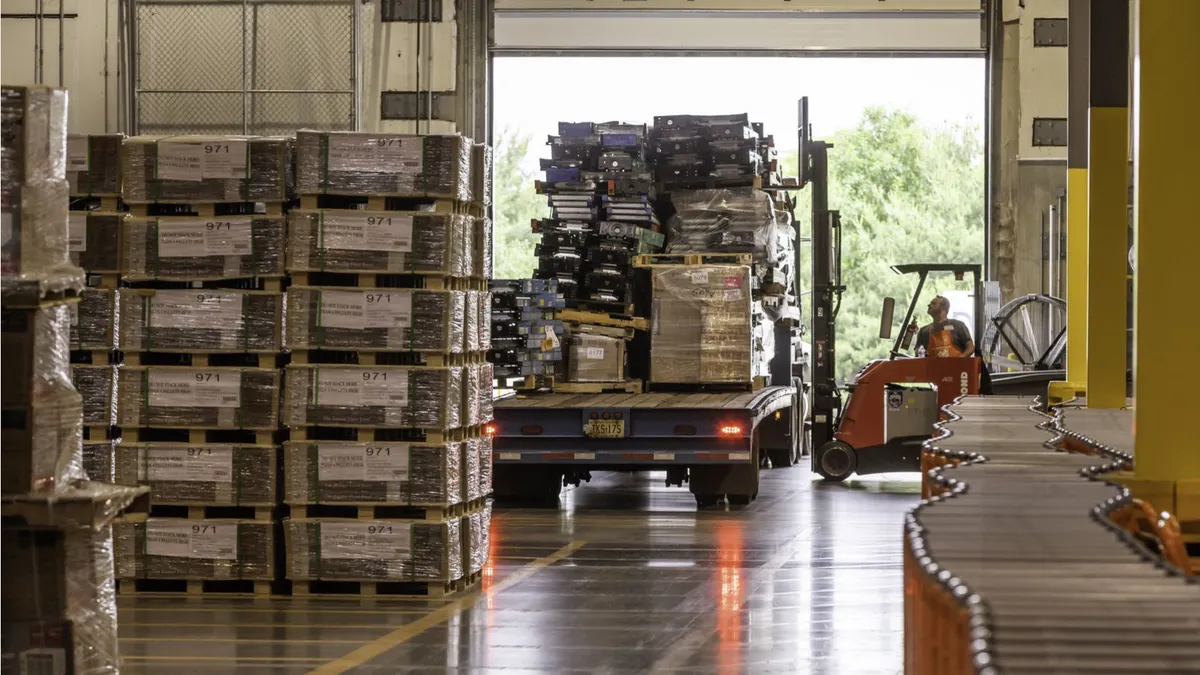Dive Brief:
- A task force led by the Consumer Brands Association has published an operational standard for contactless pickup and delivery at distribution centers, which it says can increase safety and visibility while reducing the time drivers spend at facilities. The documentation outlines the workflow and the data that need to be collected at each step.
- The standard comes after the task force deployed 12 pilot programs across member companies, showing how contactless delivery would be implemented at scale. Participants included Coca-Cola, Procter & Gamble, Target, The Home Depot, J.B. Hunt and Werner Enterprises.
- Pilot participants shifted from paper bills of lading with multiple handoffs to digital records with no face-to-face interaction required. Average dwell times for drivers participating in the contactless pilots fell from 66 minutes to 23 minutes, said Tom Madrecki, Consumer Brands Association VP of supply chain and logistics.
Dive Insight:
Companies had already been making steps before the pandemic to shift shipping documents from paper to electronic, and COVID-19 accelerated that process. But with different companies implementing different processes to eliminate supply chain paperwork, a lack of interoperability has hindered further adoption, said Will Chu, a task force member and CEO of Vector, a logistics technology company. Establishing a standard aims to solve that.
"What we're doing as an industry is we're banding together so that everyone knows what the pickup and delivery process looks like from a digital perspective," Chu said.
The task force's initial goal was to develop a standard that would help increase safety during the early stages of the pandemic, with electronic bills of lading being "the entry point" for a solution, Madrecki said. Reducing the time drivers spent at distribution centers was an added bonus to increasing safety.
"By saving 40 minutes of [dwell] time for drivers, you're creating additional road capacity that everyone can then utilize, because the system is operating that much more efficiently," Madrecki said. "You don't have drivers idling in line."
The task force deployed contactless processes at the facilities of pilot participants and, after observing the companies for up to eight weeks, identified the data points needed to execute contactless pickup and delivery, according to the standard.
The standard provides an example of how a contactless outbound shipment at a distribution center would work.
The truck driver would check in at the security point via a QR code that provides the shipment, tractor and trailer numbers. After being verified by the welcome center, the driver receives a mobile notification of the dock door assignment or trailer assignment. Once the trailer is loaded, the shipping clerk transmits the electronic bill of lading and other documents to the driver, who then e-signs the documents before departure.
Madrecki said the standard's release will allow companies to implement processes without being tied to a particular vendor or paid service. There's nothing proprietary about the data Vector has captured throughout the initiative as its software provider, Chu said.
"We're really open with what we're doing," Chu said. "For this initiative to have legs, it can't be a Vector-only solution."
Going forward, the task force is putting an emphasis on working with major retailers to implement these processes elsewhere. Companies in the CPG, clothing and furniture industries have expressed interest in implementing these standards, Madrecki said.













